The London Riots
10 Years On
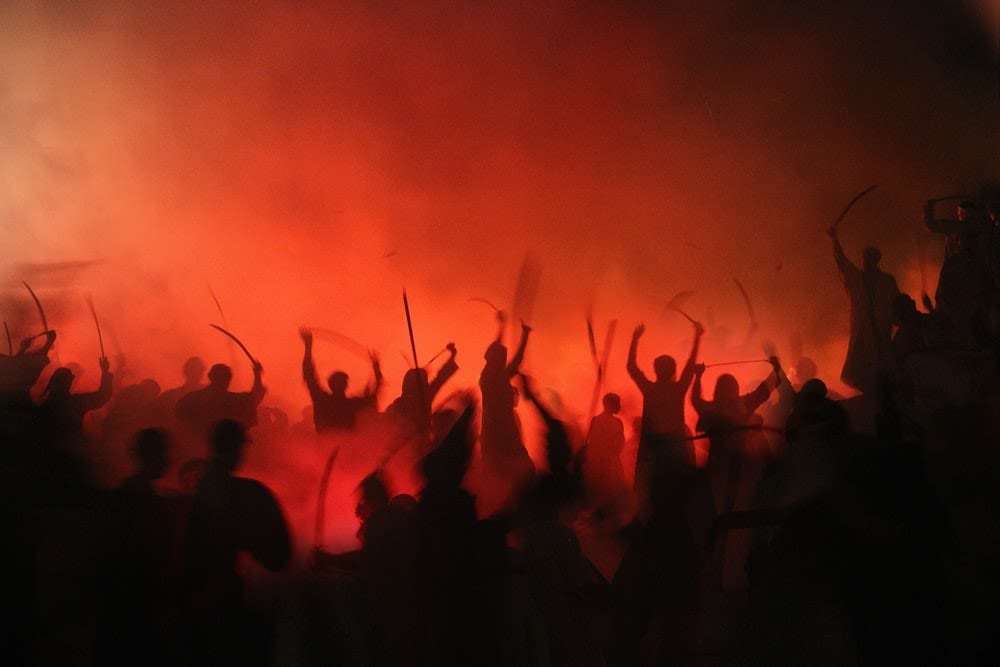
What happened
On 4th August 2011, Mark Duggan was travelling in a minicab in Tottenham when he was pulled over by the police as part of a planned operation. The 29-year-old had been monitored by them for some time as part of Operation Trident, a mission targeting gun crime in the capital. They believed Mr Duggan was in possession of a firearm. As he got out of the car, an officer shot him twice – the first bullet passed through his arm and the second struck him in the chest, killing him. Seven metres away from where his body lay a gun was found, although it had not been fired. Mr Duggan had four children.
The following day his body was formally identified by members of his family and news of what has happened gradually reached the rest of the community. On 6th August a protest marched from Broadwater Farm to Tottenham Police Station, demanding answers. It began peacefully enough, yet it sparked almost a week of devastating and violent rioting which spread throughout London, eventually tearing through most major cities in England including Birmingham, Manchester and Liverpool. By the end of the week five people are dead, 205 people are injured, more than 3000 people have been arrested and £200 million worth of property and businesses has been damaged.
This will forever be the image that stays with me from that time though. #the2011riots #oneweekinaugust #londonriots pic.twitter.com/fpeabrKaW4
— The OG ExxCee (@exxcee1) August 9, 2021
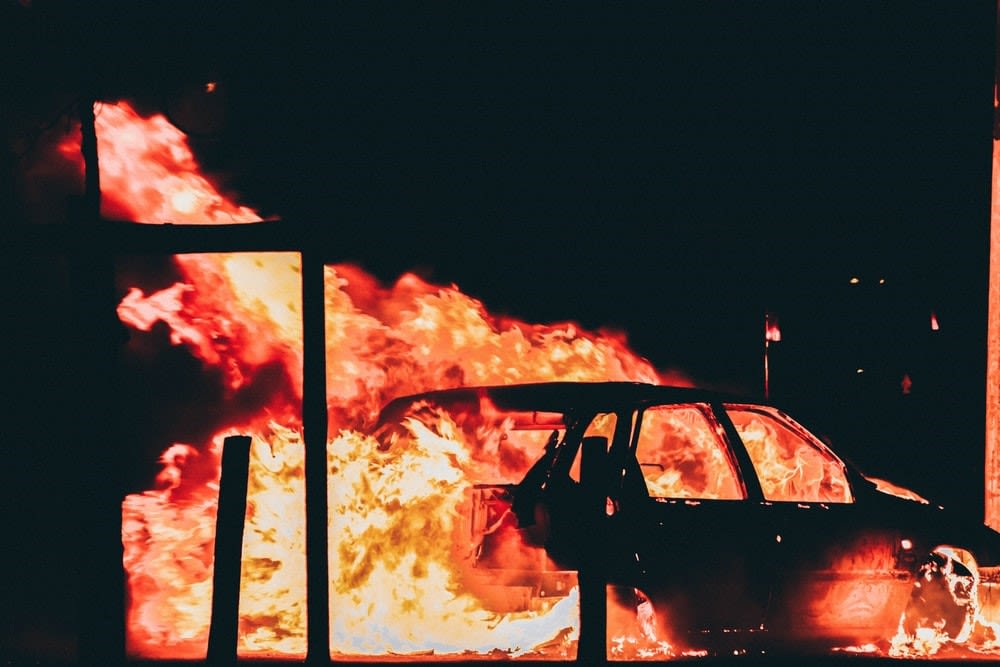
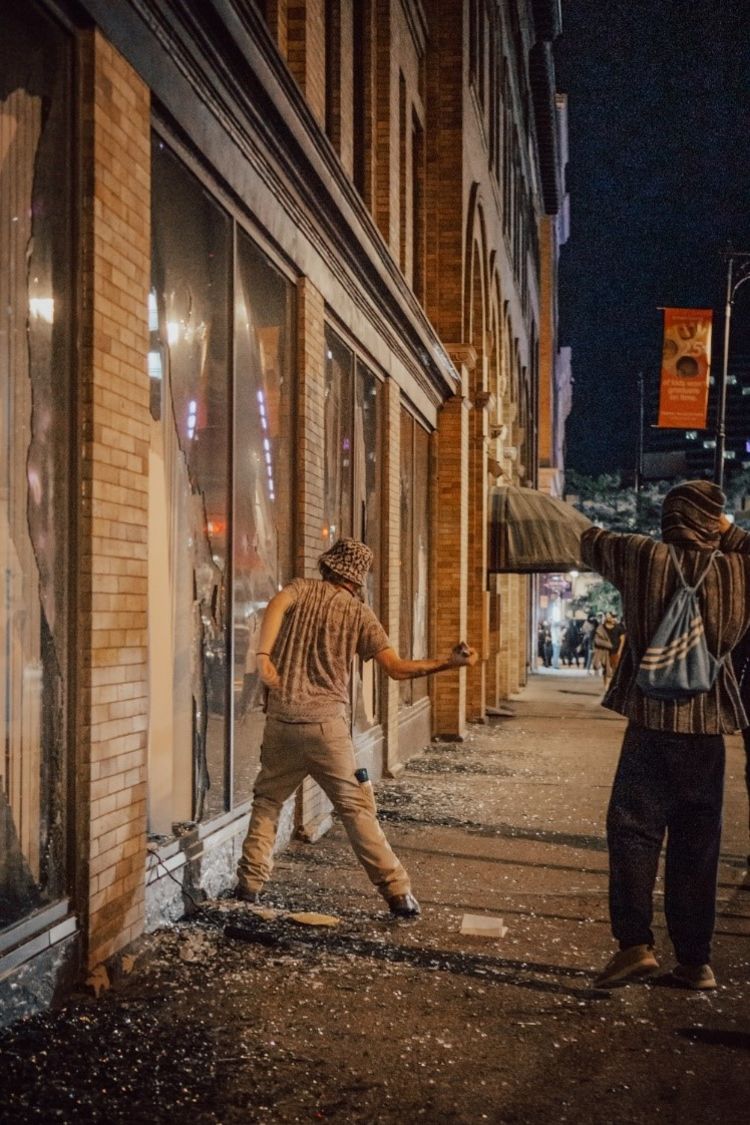

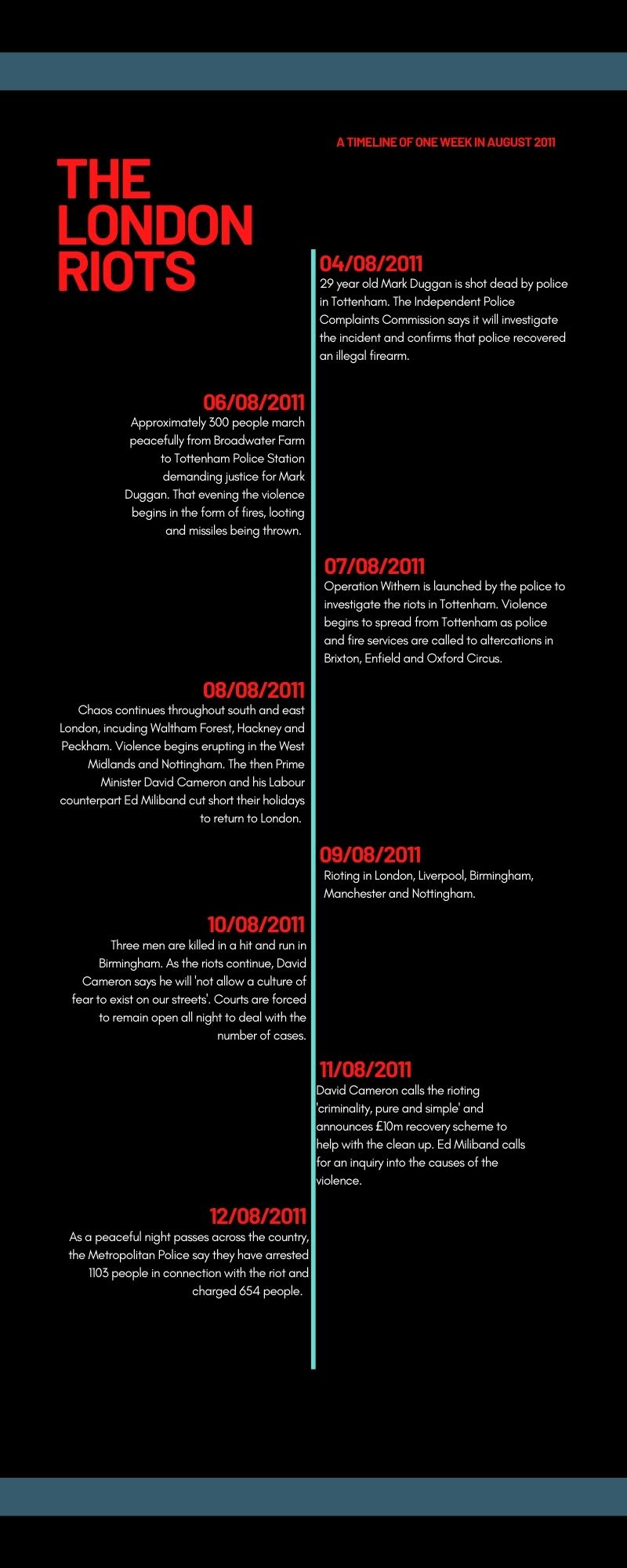
Why it happened
The reason why these riots escalated so dramatically has been a subject of debate over the last decade. Dr Matteo Tiratelli is a lecturer at the University College London Social Research Institute. He says that while the idea of rioting as a product of irrationality, caused by excitement, contagion, and mindlessness has been disproved, there are many reasons why people took part in the 2011 riots. He adds:
“Grievances against the police and the criminal justice system were significant factors for many people. There is fairly good academic evidence that riots are much more likely to happen in periods of wide social distress. The legacy of the 2008 financial crash, austerity and long-standing problems of police brutality (remember that levels of stop and search were at an all-time high in the years leading up to the 2011 riots) therefore helped to create conditions in which rioting was more likely.”
Nicola O’Keefe, Head of Programme Development and Student Partnership and a Senior Lecturer in Criminology and Sociology at Roehampton University, offers an alternative to the term riot, suggesting these actions were a form of protest or a rebellion against the actions of the police. While some of those looting can be considered mere opportunists, the circumstances of Mark Duggan’s death aggravated feelings of distrust between the black community and the police. The issues she mentions – lack of employment opportunities, disparities in educational outcomes in black and deprived areas, closure of youth centres – still resonate strongly in a post Black Lives Matter world. Comparisons can be drawn between Mark Duggan and George Floyd, ordinary men whose deaths were the spark that ignited a powder keg of rage and frustration.
London Riots #londonriots #hackney #smoking pic.twitter.com/VWCLJZs1CA
— MaxCrowReeves (@MaxCrowReeves) August 14, 2021
Not everyone rioting was aware of the political implications of their behaviour. It was the summer holidays, many of the rioters were very young – some were just bored and swept along by the actions of their peers. Whatever the motivation of the individuals, the collective violence was powerful.
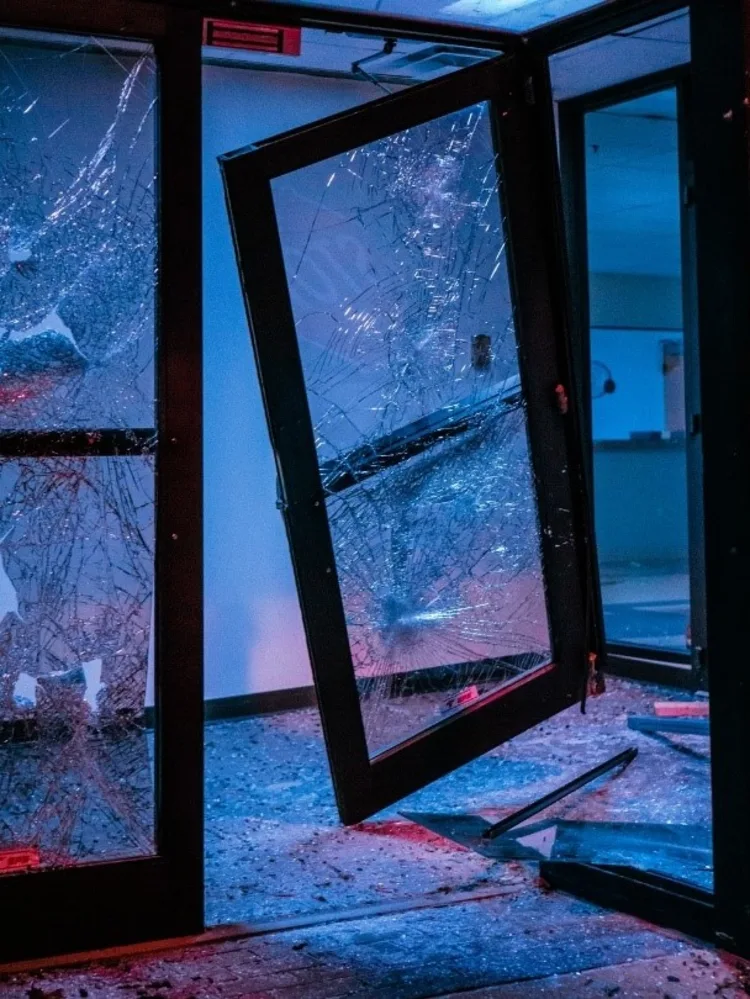
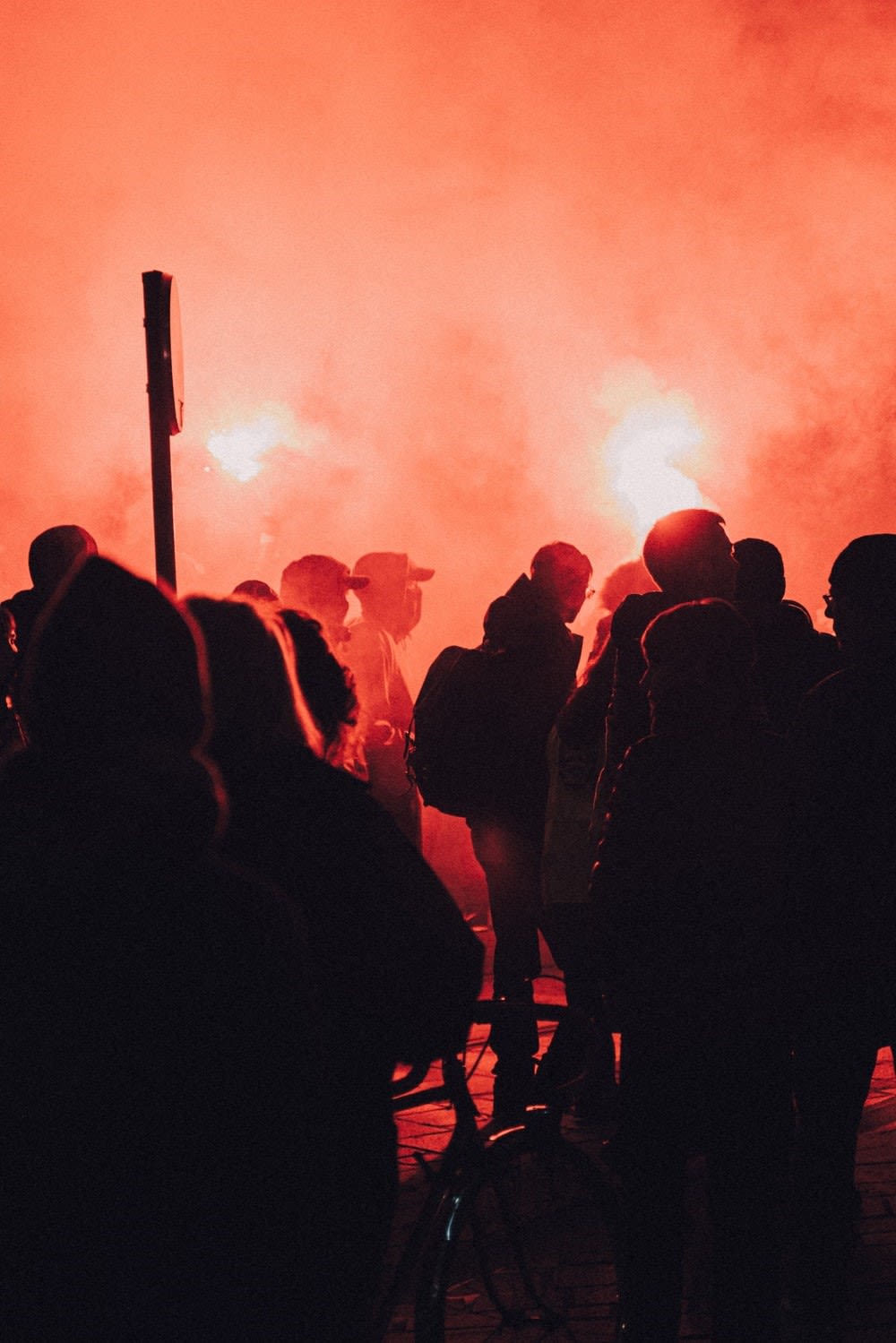
Watching The Riots 2011: 1 week in August.
— Chris Shambrook (@chrisshambrook) August 9, 2021
11 months before London 2012.
What a country of contrast we live in.
The thing that stands out about watching the documentary about the London riots in 2011 is that the political class is still the same as it was back then. The disconnect between the youths that rioted and the politicians in charge is as great as ever. Nothing has changed.
— Daniela Nadj (@DanielaNadj) August 9, 2021
Since the riots
On 8th January 2014, an inquest jury delivered their verdict on the death of Mark Duggan. An 8-2 majority concluded he was lawfully killed. In the decade since the riots funding for London youth services has been cut by £240m, with incidents such as the 2017 Grenfell fire reminding us of the stark inequalities in our society.
"The conditions that resulted in 2011 unrest remain today. I believe further civil unrest will occur again, as the same systemic inequalities remain ten years later. Confidence in the police is low, couple by increased discrimination in education and the criminal justice system as well as healthcare provision and employment opportunities. Even during the pandemic, we know that the BAME community were more likely to die from COVID and black women are still more likely to die during childbirth compared to white women."
Nicola O’Keefe.
Do you think it’s possible we could see something like this happen again?
"Absolutely."
Dr Matteo Tiratelli
Catching up on the #LondonRiots documentary from last night. Hard to think that was ten years ago. Scary times.
— Complexicated Cookie @EvilOfTheDaleks (@Johnboy_Cook) August 10, 2021
The Independent Riots Communities and Victims Panel was set up after the riots to establish why they happened and provide recommendations for the government on how to avoid similar escalation in the future. These included making sure children and young people have adequate preparation to join the workforce when they leave school, not placing offenders back into a community without wraparound support and supporting families with multiple difficulties through public services working together. They also recommended better race relations between police and black criminals. For many people little has changed in the past ten years.
Yet there are also reasons to be hopeful. The Black Lives Matter protests that took over the world last summer show that people are crying out for change and the next generation are more engaged with the fight for social justice than their predecessors. What these people need now is for those in power to address the underlying causes of this behaviour and their genuine concerns rather than dismissing their behaviour as thuggery. The London Riots have gone down in our national history, but they may not stay in the past.
All images courtesy of Unsplash
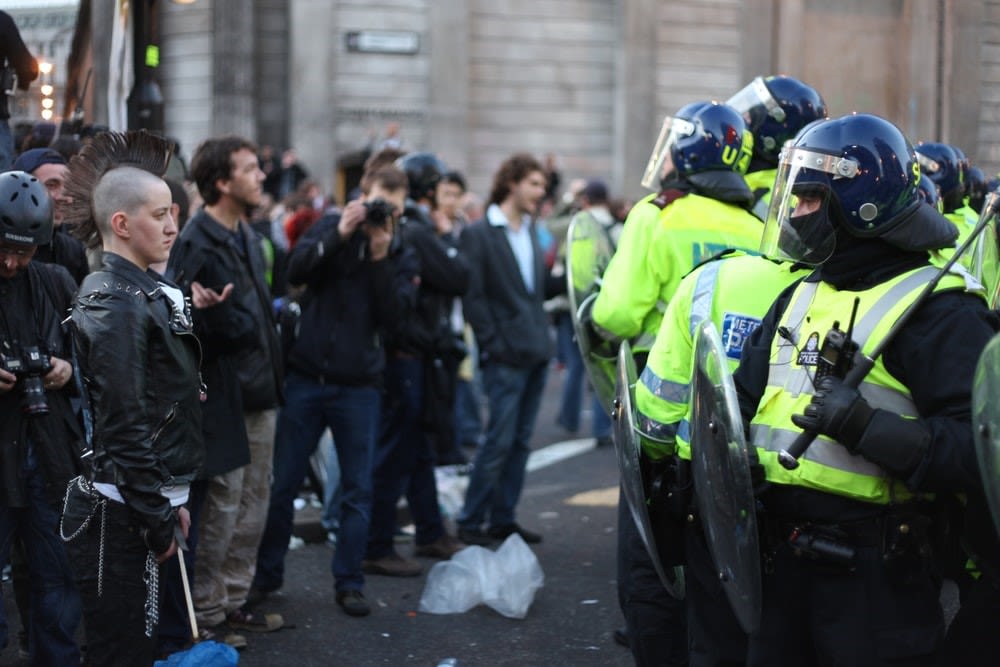
South West Londoner spoke to Phil Wells about his experience working as a police officer on the first night of the London Riots. He set up the London Retired Police Dogs Trust in 2019 to support London's retired police dogs.
